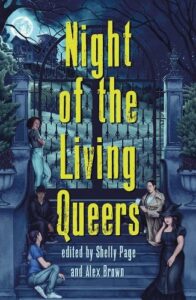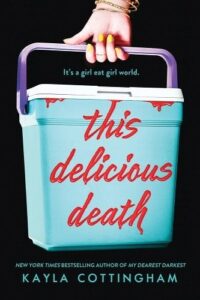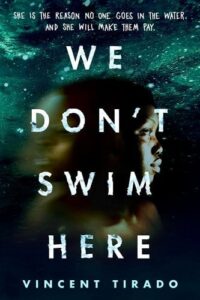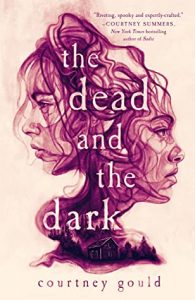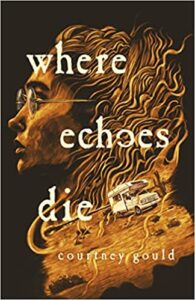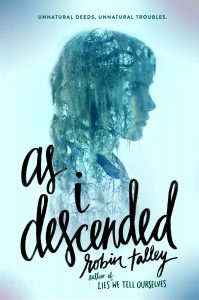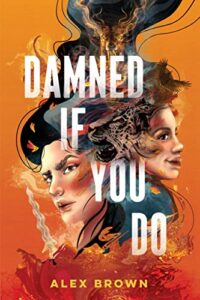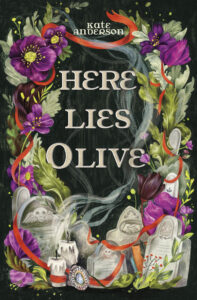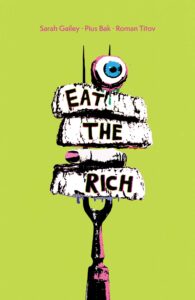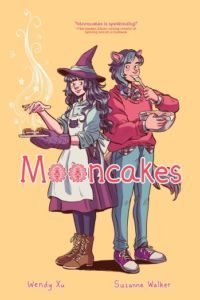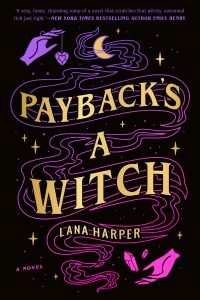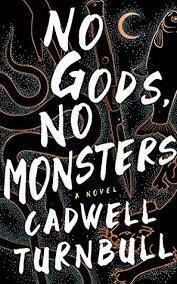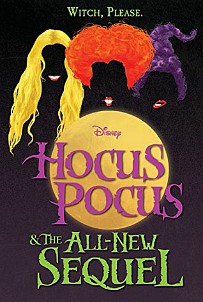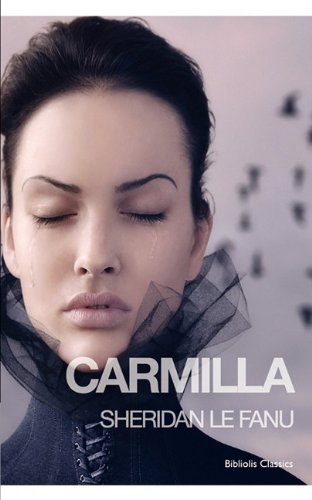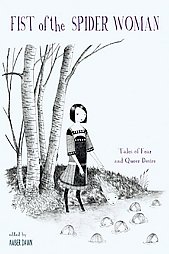With fall finally here, you might be looking for some spooky books to read in October and to get you in the perfect eerie mood. Featuring ghosts, aliens, demons, and zombies, these books are a great way to get in touch with your sinister side and prepare yourself for the best night of the year: Halloween!
Before we get into it, it’s important to remember that, as readers, we owe it to ourselves to respect our boundaries and know our limits. This is especially true with horror books, as they can address some heavy topics and depict different levels of gore and bloodshed. Young adult novels are a good way to ease into the genre, but that doesn’t mean that they are free of any type of violence or pain. Make sure to read the content warnings and don’t hesitate to draw the line in the sand if necessary.
That being said, turn off your lights, burn a candle, play some ominous music, and curl up under your blankets. Here are 10 spooky sapphic YA horror novels to check out!
Night of the Living Queers: 13 Tales of Terror Delight edited by Shelly Page and Alex Brown
In this YA horror anthology, authors explore a night when anything is possible under the blue moon: Halloween. Featuring queer characters of colour written by queer authors of color, this collection puts some fresh spins on classic horror tropes and tales. The stories are told through the lens of different BIPOC teens, including many sapphic main characters, as they experience the night that changes their lives forever.
This is perfect for people who are still discovering horror and looking to figure out which subgenres they find most entertaining, which messages speak most personally to them, and which themes they’d like to explore further. The anthology touches on a whole plethora of topics such as grief, guilt, race, gender identity, and complex family dynamics, and it features a wide array of subgenres including paranormal horror, monster horror, body horror, and horror comedy.
Content warnings: body horror, gore, blood, suicidal ideation, animal cruelty, death, child death, death of a parent, homophobia, transphobia, violence, racism, grief, blood, bullying, abandonment, mentions of substance abuse, alcohol addiction and drug overdose.
Alien: Echo by Mira Grant
Set in the Alien universe, Alien: Echo follows Olivia and her twin sister, Viola, as their family settles on a new colony world, where their xenobiologist parents expand their research into obscure alien biology. One day, an alien threat unlike any other is seen and, suddenly, their world is ripped apart. Their colony collapses into chaos, and Olivia has to use the knowledge she’s picked up over the years following her parents around the universe to escape the monster and protect her sister, all while grappling with the discovery of a shocking family secret.
This is the perfect novel for sci-fi fanatics, as it really delves into the science at the core of the story, in a way that is suspiciously believable.
Content warnings: body horror, blood, violence, gore, death, child death, death of a parent, animal death, xenophobia, grief, bullying, discrimination, severe injury.
This Delicious Death by Kayla Cottingham
In this horror comedy, four best friends venture out into the desert for one last music festival before graduation. The twist? They’re zombies. A few years prior, an unknown pathogen was released onto the world, causing certain people to undergo the Hollowing: a transformation that made them intolerant to normal food and unable to gain sustenance from anything other than human flesh. While humanity slowly returned to normal after scientists were able to create a synthetic version of human meat that would satisfy the hunger of these “ghouls”, one of the girls goes feral at the festival and accidentally kills another attendee. The group suspects that someone is drugging them to turn them feral, but can they figure out who it is before they all lose themselves too?
A horror comedy is a great way to get into a spooky mood while still being able to sleep at night. With an all-queer cast, including a bisexual main character, a trans and bisexual love interest, and lesbian and bisexual side characters, this is perfect for people who are looking to sink their teeth into mess and chaos.
Content warnings [as listed by the author]: alcohol consumption by minors, anxiety disorders, blood and gore depiction, body horror, cannibalism, captivity and confinement, dead bodies and body parts, deadnaming, death of a grandparent, death of a sibling, drugging, drug use, fire, grief and loss depiction, gun violence, intrusive thoughts, murder, needles and syringes, nightmares, parental neglect, pandemic, scars, sexism, suicidal ideation, transphobia.
Burn Down, Rise Up by Vincent Tirado
This is the story of Raquel, a young sapphic Afro-Latina from the Bronx whose mother has recently come down with a mysterious illness that the doctors can’t explain. At the same time, multiple Black kids have been disappearing from the city without a trace, and the police are doing very little to investigate, not particularly concerned about these children’s whereabouts. One day, Raquel’s crush, Charlize, asks for her help to find her recently missing cousin, and the girls end up following an urban legend called the Echo Game, which leads them down to a sinister, unknown, underground part of the city.
This debut novel is a deep dive into the racist policies of the Bronx in the 1970s and 1980s, including the redlining, the slumlords, and the gentrification. It is the epitome of “disgusting” and will keep you on edge from start to finish.
Content warnings: gore, violence, death, racism, gun use, police brutality, discussion of cannibalism, fire injuries/burns, missing family members, sick family members, homophobia.
We Don’t Swim Here by Vincent Tirado
In their second novel, We Don’t Swim Here, Tirado tells the story of two Afro-Latina cousins, Bronwyn and Anais. Anais lives in Hillwoods, a small, secluded town to which Bronwyn is forced to move, as her family wants to be near her grandmother in her final moments. However, Bronwyn struggles with the move, as the people in Hillwoods are predominantly white, particularly weird, and eerily standoffish. Her cousin also warns her about some unspoken rule that exists within the town which bans anyone from swimming—a big issue for Bronwyn who was a competitive swimmer back home. The story follows her as she tries to navigate this unsettling community, as well as Anais who tries to keep her cousin in the dark as much as possible and protect her from the town’s sinister past.
If you love sapphic final girls who feel like they have the weight of the world on their shoulders, or characters who try to fight back against the idea that they do not belong or are not allowed to belong in certain spaces, you will love this novel.
Content warnings: body horror, blood, murder, grief, death, child death, racism, hate crime, gun violence, kidnapping, medical content.
Sawkill Girls by Claire Legrand
Sawkill Girls is the story of very different girls who live in a small community on the island of Sawkill Rock. As beautiful as the town may seem, behind the campfires and blue waves crashing against the shore, there lies a dark secret. For decades, girls have been disappearing inexplicably, allegedly taken away by an inhuman spirit. But what happens when the awkward, plain new girl, Marion, unwillingly joins forces with Zoey and Val to fight this legendary evil and save the girls in their community, including themselves?
Featuring a cast of sapphic and asexual main characters, this book is perfect for people who are all about dismantling decades-long, misogynistic traditions and who like a weird, genre-bending twist to their stories.
Content warnings: gore, violence, blood, murder, aphobia/acephobia, loss of a loved one, grief, child abuse, cults, fire, pedophilia, sexual assault, animal death.
The Dead and the Dark by Courtney Gould
Courtney Gould’s debut novel, The Dead and the Dark, is set in smalltown Snakebite, Oregon, where everything seems to be going wrong. Teenagers are disappearing, some turning up dead, the weather isn’t normal, and the community seems hellbent on blaming it all on Logan’s two dads—hosts of a popular ghost hunting TV show—after they’ve decided to return to town. Although Logan has never lived in Snakebite before, she agrees to help Ashley, whose boyfriend was the first teen to go missing, in her investigation into the town’s deepest secrets. As they uncover the truth about the people in their community, they also start to uncover the truth about themselves and their growing feelings for one another.
Great for readers who are looking for some romance in the horror stories they pick up, this book will put you in the perfect eerie mood, while also reminding you of the power of family and love.
Content warnings [as listed by the author]: homophobia, child death, murder, claustrophobia, drowning, slurs.
Where Echoes Die by Courtney Gould
In this second novel by Courtney Gould, we follow Beck, a young lesbian who has been struggling since her mother’s death, desperate for things to return to the simpler, happier days of her childhood. Wanting to understand more about her mother, a brilliant but troubled investigative reporter, Beck travels to Backravel, the town that was the center of her mother’s journalistic work for years. Followed by her younger sister, Riley, Beck soon realizes that there is something off about the small, secluded town. Although everyone’s memory seems to be filled with holes and missing information, the people seem eerily at ease with the otherwise inexplicable happenings of their community. With the help of the daughter of the town’s enigmatic leader, Avery, Beck must uncover the secrets of Backravel before her or her sister get hurt… or before she loses herself completely.
Touching on the struggle of death and grief, this novel packs an emotional punch, while keeping its readers guessing from the first page until the very last.
Content warnings [as listed by the author]: death of a parent, death of a loved one, emotional abuse, gaslighting, emetophobia/vomiting.
As I Descended by Robin Talley
In this modern, dark academia retelling of Macbeth, Maria and Lily are their school’s ultimate power couple—even if no one knows it but them. The only thing that stands in their way towards a perfect future together is the golden child of their school, Delilah. Maria needs to win the Cawdor Kingsley Prize, as the scholarship money would allow her to attend Stanford and keep her relationship with Lily alive. The problem is that Delilah is seen as the presumptive winner of the award. What she doesn’t know is that Maria and Lily are ready to do anything to make their dreams come true, including harnessing the dark power long rumored to be present on their school campus.
This book is filled with ghosts, Shakespearian tragedy, and queer teenagers quickly delving into chaos. Featuring a disabled lesbian and her sapphic girlfriend as the main characters, this story will have you questioning the limits to which people will go for love and victory.
Content warnings: blood, gore, death, violence, self harm, suicide, murder, ableism, homophobia, biphobia, lesbophobia, forced outing, forced drug usage, panic attacks, psychosis, racism, slavery, grief, child death, emotional abuse, religious bigotry, bullying, car accident, fire.
Damned If You Do by Alex Brown
Heavily inspired by Filipino folklore, this horror comedy features Cordelia, a high school stage manager who spends her days focusing on the school play, trying to keep up with her grades, and desperately pining over her best friend, Veronica. One day, the demon to which she sold her soul seven years ago comes back to see her under the guise of her new school guidance counselor and requires that she pay back the deed. The two must work together to defeat a different, more powerful demon who looks to harm her hometown and all those in it.
This book features the perfect amount of entertaining high school drama and fiendishly clever demons, all while it explores the type of trauma that some children face at the hands of a parent and the ever-lasting impact that it has on them and those closest to them.
Content warnings: child abuse, murder, violence, gore, blood, body horror, depictions of verbal abuse, mentions of physical abuse, loss of a parent.
Looking for even more sapphic horror books? Check out the Lesbrary’s horror tag for many more sapphic horror recommendations! You can also browse just the YA horror reviews. Happy Halloween reading!

